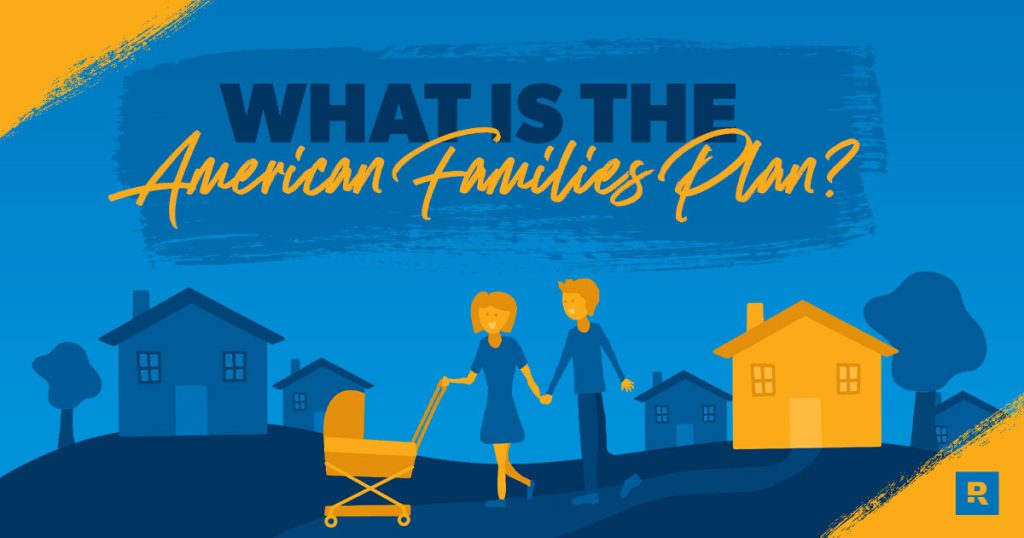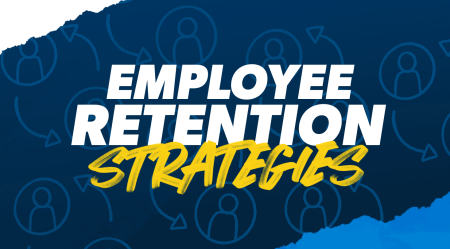In the first 100 days of presidency, a lot happens. There’s the peaceful transfer of power, the setup of a new administration, and the pressure to make good on all those campaign promises. Wasting no time in his first 100 days, President Biden shared his plans for two big pushes that could hit your wallet. First, there was the American Jobs Plan, and then there was the American Families Plan. Both are part of his Build Back Better agenda that originally came in at a combined price tag of nearly $4 trillion—but has since been chopped back to $1.75 trillion.1
But how do programs like this coming out of Washington affect your daily life? Let’s break down just one of those programs—the American Families Plan. Here’s what it means for you and how it could impact your money in the long run (if it passes).
What Is the American Families Plan?
The American Families Plan is a part of President Biden’s larger Build Back Better initiative (try saying that three time fast). Under the American Families Plan, families would get aid through childcare, universal pre-K, paid family and medical leave, plus a bunch of other things.
The goal here is to help send some relief to families and to give the economy a major kick to help it bounce back from the shot it took from COVID-19. The overall plan will invest trillions (yep, that’s trillions with a T) into education, jobs, infrastructure, health care and other programs (like the ones we just talked about).
What’s Included in the American Families Plan?
If you thought all those stimulus checks were expensive, hold on to your hats. Let’s break down some of the major things in the American Families Plan and the amount of spending in it:
- $225 billion in childcare funding
- $225 billion in paid family and medical leave (including paid parental leave)
- $200 billion in pre-K funding
- $200 billion to ramp up the Affordable Care Act2
- $3,600 per child 5 or younger, $3,000 per child over 6 with the Child Tax Credit (increased for one additional year)3
Wowzer—that’s a lot of dollar signs right there. And in 2022, they even cut out $109 billion of funding for two years of community college from the bill.4
So, where are they going to get all the money for this?
If you guessed higher taxes, then congratulations—you win. The plan here is to fund all of this economic growth through tax hikes on capital gains for wealthy Americans (that’s the tax paid when people sell things like stocks and real estate). While the American Jobs Plan would be paid for by sticking a higher tax on corporations, funding for the American Families Plan would come from the pockets of wealthy Americans.5,6
How Would the American Families Plan Affect Your Taxes?
So, about those tax hikes—will they actually impact you? Well, they will if you pull in an income of more than $400,000 each year. Yep, funding for the American Families Plan will come from raising the tax rate for high-income earners over $400K, plus raising capital gains, estate and gift tax. So if any of that applies to you—look out.
Americans earning more than $1 million could see their capital gains tax rate jump to 39.6%.7 That’s nearly double where it stands now at 20%.8 But get this: The Affordable Care Act surtax (a tax on investment income for people with an income higher than $200,000) would still have to be worked in here at 3.8%. So even though the tax rate would change from state to state, the grand total average would be somewhere closer to 48%!9 We don’t care how much money you make—being taxed at nearly 50% is still a lot.
How Could the American Families Plan Impact Your Money?
Before we get too ahead of ourselves here, remember that Congress still has to weigh in before these changes can take effect. But let’s dig into the details of how some of these changes could impact your money in both good and not-so-good ways.
Investments
As soon as talk of the American Families Plan picked up speed, some people started selling off their stock investments. Why in the world would they do that all of a sudden? Well, because they’re worried about how much their investment gains (aka the money they’ve made on them) would be taxed if this plan gets pushed through.
Taxes don’t have to overwhelm you. See what’s best for your situation—and services you can trust.
This is why we love a good Roth IRA—it grows tax-free. Which means that it doesn’t matter what tax hikes happen today, next year or 30 years from now. No matter what, the growth in your Roth IRA and any withdrawals you make after age 59 1/2 are tax-free (as long as you’ve had the account more than five years). Because you paid taxes on the front end, you don’t owe any taxes when you draw from the money in retirement. Crazy, right? Yes. Crazy amazing. A Roth IRA is a great place to park your investments to keep them away from government tax hikes.
Corporate Tax Rate Increase
You might just breeze past reading this one, because if you’re not a corporate executive, what does it really matter to you? But here’s the thing: If the corporate tax rate increases a lot, companies might take their business somewhere else—like to a different country where the tax rate is lower. And that could mean fewer jobs and even pay cuts for the average American worker.
Paid Family and Medical Leave
If you’re planning on taking family medical leave for the birth of a baby, you’d have up to 12 weeks of paid time off under the American Families Plan. This can go a long way in making sure your money situation doesn’t change just because you’re out of work caring for a newborn for a few months. This kind of national plan setup would give workers up to $4,000 a month, covering at least two-thirds of their regular pay.10
But this paid family medical leave doesn’t just cover time off needed after adding a child to your family. It also makes sure you’re paid if you have to take a lengthy leave because you or a loved one is sick.
Pre-K Education and Pell Grants
Under the American Families Plan, you wouldn’t be footing the bill for pre-K education for your little one. The White House estimates that offering paid-for pre-K will save the average family a total of $13,000.11
And what about when it comes to higher education? Well, at one point, the American Families Plan did include paying for two years of community college. But as the bill gets revamped (and they give it another shot to pass again), community college got the boot. No word yet on how this will impact the fact that Biden also wanted to up the Pell Grant for low-income students by an extra $1,400.12 And who knows what any of this will mean for Biden’s plans for student loan forgiveness.
Child Tax Credit
When the American Families Plan was first introduced, the bill included a permanent change to the child tax credit—one of the most eye-catching things of the plan.13 When the bill was first introduced, the plan was to make the child tax credit increase stick around for the next five years, adding $15,000–18,000 per child to the pockets of American families.14
But don’t start counting those dollar bills just yet. The larger Build Back Better agenda cut the extended child tax credit proposal from five years down to one.15
Make Your Own Plan for Your Family
Look, we’ve said it before (a lot), and we’ll say it again—no matter what’s being promised, don’t depend on the government to swoop in, cut you a check, and then pat you on the head like a good Fairy Godmother. Although, they’ve been doing a lot of it these days, so there’s that.
At the end of the day, you have more control over what happens in your own life and in your own house than the White House ever will. So live on less than you make, pay off debt, save up for things you need, invest wisely, and be generous. Those are money principles you can count on year after year—no matter who’s in office passing laws. Whatever goal you’re working on next, Ramsey+ can help you stay on track to make it a reality. Learn what your next right step is and get the money tools for real life.
Read the full article here












